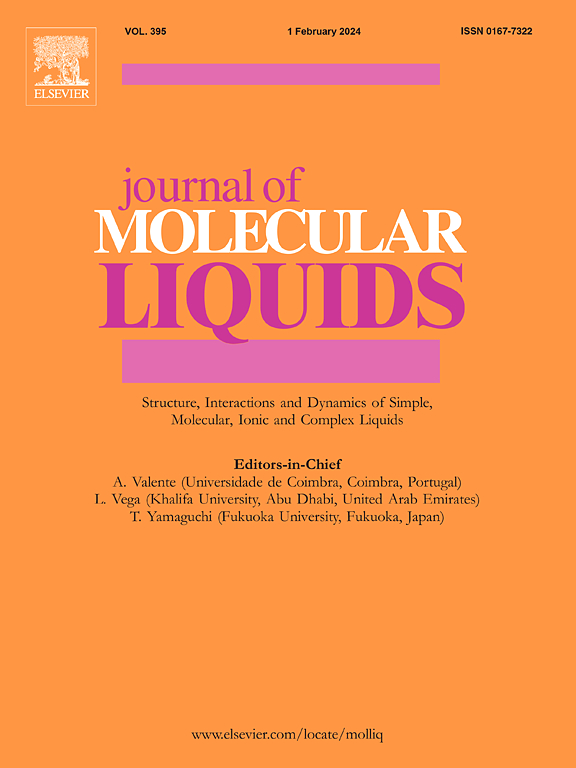Diffusion behavior of phase change materials at the interface of aged asphalt binder based on molecular dynamics simulation and experimental analysis
IF 5.3
2区 化学
Q2 CHEMISTRY, PHYSICAL
引用次数: 0
Abstract
To investigate the diffusion behavior of phase change materials (PCMs) in differently aged asphalts during leakage and their impact on asphalt performance, this study focuses on three PCMs: paraffin, lauric acid, and tetradecanol. The diffusion coefficients of these materials at various temperatures were predicted using molecular dynamics (MD) simulations, and their practical implications were evaluated through diffusion experiments and rheological property analysis. The results indicated that the diffusion coefficients of PCMs increased progressively with rising temperatures. Additionally, at mixing temperatures (160 °C), PCMs diffused more rapidly in older asphalt. However, this trend reversed at medium and low temperatures. Furthermore, the proximity of the material layer to the PCMs correlated with higher concentrations of PCMs in the asphalt and a greater impact on its performance. Dynamic shear rheometer (DSR) tests revealed that PCM diffusion into asphalt reduced its resistance to high-temperature deformation while enhancing its resistance to low-temperature cracking. The impact of PCMs on the rheological properties of asphalt increased with the degree of aging. Lauric acid, due to its attraction to the strongly polar asphaltenes and resins in asphalt, exerted a more pronounced effect on the rheological properties of long-term aged asphalt. In contrast, paraffin, with its longer molecular chain, had the least impact. Although diffusion was a long-term and slow process, the high temperatures during asphalt mixing were sufficient to modify asphalt properties to a depth of 10 mm. Thus, preventing PCM leakage during the mixing process should have been prioritized.
求助全文
约1分钟内获得全文
求助全文
来源期刊

Journal of Molecular Liquids
化学-物理:原子、分子和化学物理
CiteScore
10.30
自引率
16.70%
发文量
2597
审稿时长
78 days
期刊介绍:
The journal includes papers in the following areas:
– Simple organic liquids and mixtures
– Ionic liquids
– Surfactant solutions (including micelles and vesicles) and liquid interfaces
– Colloidal solutions and nanoparticles
– Thermotropic and lyotropic liquid crystals
– Ferrofluids
– Water, aqueous solutions and other hydrogen-bonded liquids
– Lubricants, polymer solutions and melts
– Molten metals and salts
– Phase transitions and critical phenomena in liquids and confined fluids
– Self assembly in complex liquids.– Biomolecules in solution
The emphasis is on the molecular (or microscopic) understanding of particular liquids or liquid systems, especially concerning structure, dynamics and intermolecular forces. The experimental techniques used may include:
– Conventional spectroscopy (mid-IR and far-IR, Raman, NMR, etc.)
– Non-linear optics and time resolved spectroscopy (psec, fsec, asec, ISRS, etc.)
– Light scattering (Rayleigh, Brillouin, PCS, etc.)
– Dielectric relaxation
– X-ray and neutron scattering and diffraction.
Experimental studies, computer simulations (MD or MC) and analytical theory will be considered for publication; papers just reporting experimental results that do not contribute to the understanding of the fundamentals of molecular and ionic liquids will not be accepted. Only papers of a non-routine nature and advancing the field will be considered for publication.
 求助内容:
求助内容: 应助结果提醒方式:
应助结果提醒方式:


